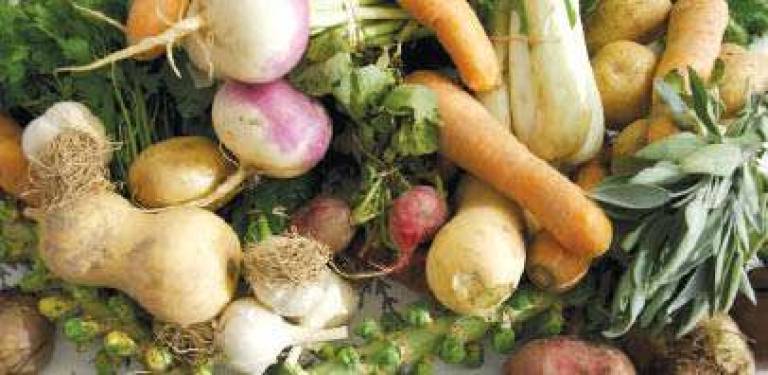A Primer For C.S.A. Season

It's sign-up time for farmer co-ops across the city
Perhaps the most intriguing aspect of being a member of a CSA is that you never know exactly what vegetables you're going to get every week ? until the moment you collect them. And for an estimated 44,000 New Yorkers who participate in Community Supported Agiculture programs across the city, that is just fine.
CSA season is upon us. If you're not familiar with the process, consumers pay an upfront fee entitling them to a 22-week-long weekly pickup of whatever is harvested on the farm each week. It's a great system: the farmer gets paid upfront and can buy supplies, and consumers get farm-fresh produce.
Roxbury Farm started Manhattan's first CSA in 1991. (They currently have four). According to Paula Lukats, the CSA Program Manager for Just Food, the non-profit organization that facilitated CSA growth in N.Y., the number has since grown to 150. City-based CSA organizers also plan farm trips, "meet the farmer" events, potluck dinners and food policy discussions.
Carnegie Hill is home to one of the most robust CSA's, with more than 100 members hosted at the Church of Heavenly Rest and provided by Stoneledge Farm in South Cairo, NY. The two largest, with 125 members in 2013 were Turtle Bay CSA (distributing at the Vanderbilt YMCA on E 47th Street) and the CSA at Ansche Chesed on 100th and West End Avenue. The Washington Square CSA, has a reputation for being one of the most dynamic groups. WSP Flack & Kurtz, a workplace CSA serviced by Katchkie Farm, pioneered the CSA Smack Down recipe competition, now going into its third year and hosted by Just Food. The winning Smack Down recipe for 2013 was a Collard Napoleon Stuffed with Fall Ratatouille and Pear Chutney, from the Crown Heights Farm Share. For 2012 it was Reconstructionist Latkes with Apples and Honey and Kale Salad (add some kohlrabi and carrot to your traditional shredded potato!)
For some, familiar veggies like tomatoes, lettuce, eggplant and zucchini are most welcome. Others rejoice when exotic items like garlic scapes, Jerusalem artichokes or Asian greens arrive. Purple potatoes, colored carrots can be a source of controversy. And corn, though much beloved, is extremely challenging to grow organically ? so there is never enough to satisfy the demand. Some people can't get enough kale while others cannot give it away fast enough.
Some other important CSA facts to know:
*A typical weekly share contains 7-10 varieties of produce weekly, enough for 2-4 people depending of your veggie consumption.
*Most CSA's donate their unclaimed shares to soup kitchens, shelters or other organizations that feed the hungry.
*The cost ranges from $450-650/share; there are half shares and longer seasons. Many CSA's have flexible payment options and accept food stamps.
*Most CSA's now offer optional fruit or egg shares; some offer meat, dairy, honey, syrup, wine or beer.
Sign up season is now. Some CSA's are maxed out, but there is plenty of capacity left. To find the CSA closest to you, go to justfood.org or localharvest.org.
Finally, a confession: until recently, I was a CSA junkie, belonging to three different farms in one season. The cure? In 2006 I bought a 60-acre parcel in Kinderhook, NY and grew my own farm. So be warned.
Liz Neumark is chief executive of the catering company Great Performances.